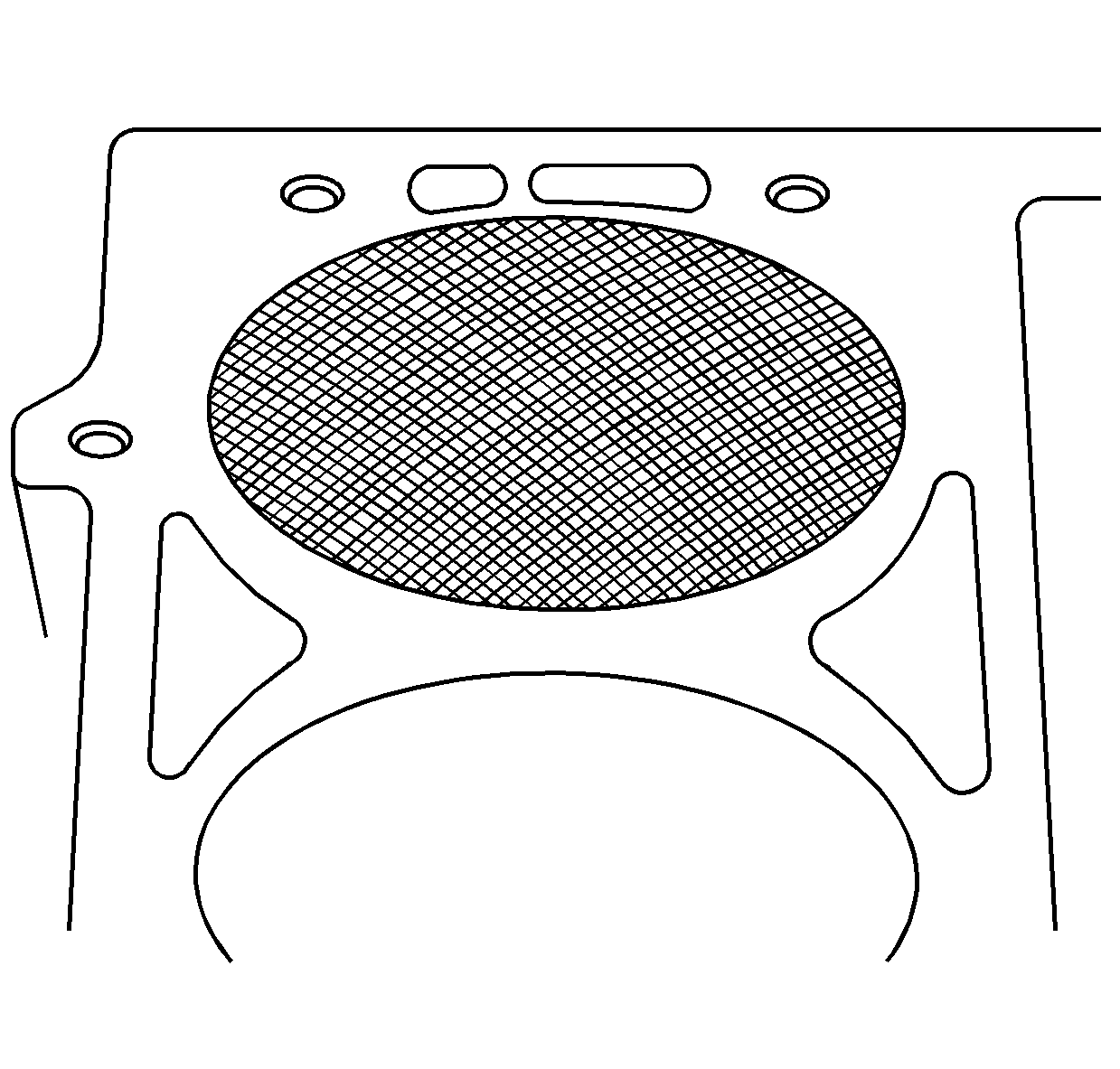Honing Procedure

Notice: Always remove all bearings and components from engine block before cleaning,
boring or honing the engine block.
- When honing the cylinders, follow the manufacturer's recommendations
for equipment use, cleaning, and lubrication.
| • | Use only clean, sharp stones of the proper grade for the amount
of material you remove. |
| • | Dull, dirty stones cut unevenly and generate excessive heat. |
| • | Do not hone to a final grade with a coarse or medium-grade
stone. |
| • | Leave sufficient metal so that all stone marks may be removed
with fine-grade stones. |
| • | Perform final honing with a fine-grade stone and hone
the cylinder in a cross hatch pattern at 45-65 degrees to
obtain the proper clearance. |
- During the honing operation, thoroughly clean the cylinder bore.
| • | Repeatedly check the cylinder bore for fit with the selected piston. |
| • | All measurements of the piston or the cylinder bore should be
made with the components at normal room temperature. |
- When honing to eliminate taper in the cylinder, make full strokes
of the hone in the cylinder. Repeatedly check the measurement at the top,
the middle, and the bottom of the bore.
| • | The finish marks should be clean but not sharp. |
| • | The finish marks should be free from imbedded particles and torn
or folded metal. |
- By measuring the selected piston at the sizing point and by adding
the average of the clearance specification, you can determine the cylinder
honing dimension required. Refer to
Engine Mechanical Specifications
.
- When finished, the reconditioned cylinder bores should have less
than or meet the specified out-of-round or taper requirements.
- After final honing and before the piston is checked for fit, clean
the bores with hot water and detergent.
| 6.1. | Scrub the bores with a stiff bristle brush and rinse the bores
thoroughly with hot water. Do not allow any abrasive material to remain
in the cylinder bores. |
| • | Abrasive material may cause premature wear of new piston rings
and cylinder bores. |
| • | Abrasive material will contaminate the engine oil and may cause
premature wear of the bearings. |
| 6.2. | After washing the cylinder bore, dry the bore with a clean shop
towel. |
- Perform final measurements of the piston and cylinder bore.
- Permanently mark the piston for the specific cylinder to which
it has been fitted.
- Apply clean engine oil to each cylinder bore in order to prevent
rusting.
Boring Procedure
- Before you start the honing or boring operation, measure all new
pistons with the micrometer contacting at points exactly 90 degrees
from the piston pin centerline.
Important: If you do not check the cylinder block, the boring bar may be tilted,
this may result in incorrect rebored cylinder wall to crankshaft angle.
- Before you use any type of boring bar, file the top of the cylinder
block in order to remove any dirt or burrs.
- Carefully follow the instructions furnished by the manufacturer
regarding use of equipment.
- When you rebore cylinders, make sure all crankshaft bearing caps
are in place.
| • | Tighten the bearing caps to the proper torque in order to avoid
distortion of the bores in the final assembly. |
| • | The crankshaft must be clear of the boring cutter when you bore
each cylinder. |
- When you take the final cut with a boring bar, leave 0.03 mm
(0.001 in) on the diameter for finish honing. This gives the required
position to the cylinder clearance specifications. Carefully perform the
honing and boring operation in order to maintain the specified clearances
between pistons, rings, and cylinder bores.

